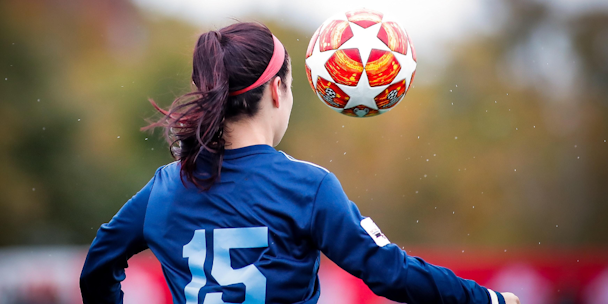The rules of the game: how is football focused marketing evolving?
As part of The Drum’s Deep Dive into Sports Marketing, IAB UK speaks to Becca Wastell (director of commercial, LiveScore Group) about the rules of the game when it comes to advertising around football (soccer) content.

She offers insights into what advertisers should be considering when it comes to the upcoming men’s FIFA World Cup 2022, how the growing popularity of women’s football is opening up the game to brands new to the space, and how sports marketing is set to evolve as digital channels become increasingly immersive.
With the women’s Euros and men’s World Cup, 2022 is not only a big year for football fans, but also for advertisers wanting to align themselves with the competitions. How can brands use digital channels to capitalize on this opportunity in a timely and relevant way?
Brands who understand and embrace the modern consumer viewing habits of football fans will give themselves the best chance to land effective and impactful advertising campaigns.
Using research from Video Intelligence, we know that 86% of football fans engage with a second-screen experience whilst watching football. Through our own research, two thirds of fans use dedicated sports apps as a focal point of their ecosystem, while half also use them alongside more social-focused channels, providing two key points for engagement.
Apps that offer real time updates, insight and content (such as our media brand, LiveScore) provide huge opportunities for brands both creatively and from a display perspective. When deployed with top quality execution, such partnerships allow advertisers to authentically enter the fan match experience.
It would be a mistake, however, to assume that the opportunity begins and ends with the live match itself. 54% of our LiveScore users actively engage with the pre-match environment, while just under half interact with post-match content. Both offer unique opportunities to align with the objectives of advertisers - whether through the anticipation and excitement beforehand, or the dynamic and insightful reaction of post-match.
Football fans are a passionate bunch. How important is it that brands looking to advertise in this space are authentic and ‘in the know’ about the game?
Authenticity is absolutely vital when operating in such a passionate space for fans. We’ve seen this via data within the Stackla Consumer Behaviour report, which revealed that 90% of consumers say authenticity is key in determining feelings towards a brand. We’ve seen this point reinforced by our own research with YouGov, which identified that being considered a ‘trustworthy’ brand was the number one factor for football fans when choosing preferred sports publishers.
By partnering with a digital publisher who has heritage in this space and provides high-level insight, content and statistics, brands can leverage this credibility and truly become part of the fan experience.
So, while it is valuable for the advertising brand to be ‘in the know’, what is even more important is that they act as the conduit for fans themselves to be in that state. This helps to empower fans, increasing their social currency and broadening their communities.
Is the growing popularity of - and therefore growing commercial opportunity of - women’s football opening up the game to brands that perhaps wouldn’t have traditionally aligned themselves with the game?
Unquestionably, we are starting to see new brands enter the space from both a sponsorship and advertising perspective, capitalizing on the unique opportunity that the women’s game presents right now. In fact, there are several diverse customer bases within women’s football for brands to communicate with. There are those seeking to take a more overtly female-centric position, whilst many see the opportunity to talk to a ‘family’ demographic. All of this allows a more bespoke contextual and culturally relevant opportunity for brands, alongside those who operate in a more ‘traditional’ football environment.
Equally important is the increase in male engagement with women’s football, which is where competitions, such as UEFA Women’s Euro 2022, play a vital role as a point of national pride and discussion. All of which provides advertisers from a wide range of verticals the chance to be part of this fast-growing community.
How do we see advertising in this space evolving as digital channels become ever more immersive?
We predict that the most progressive publishers and advertisers will be best placed to embrace and capitalize on an increasingly immersive digital experience.
Consumer habits have changed significantly, with Nielsen Sports data showing that Gen Z are far more likely to engage in second activities whilst watching sport, from social media and app usage to gaming. This means that the publishers who can seamlessly integrate live coverage, games, social, data and insights into one environment will be able to drive this revolution, taking their audience to new immersive experiences.
The dawn of true 5G adoption poses fascinating challenges for the advertising industry, with both virtual reality (VR) and augmented reality (AR) experiences likely to become a key component of this evolving sector.
Content by The Drum Network member:

IAB UK
The Internet Advertising Bureau (IAB UK) is the industry body for digital advertising, committed to building a sustainable future for digital advertising. We do...
Find out more
